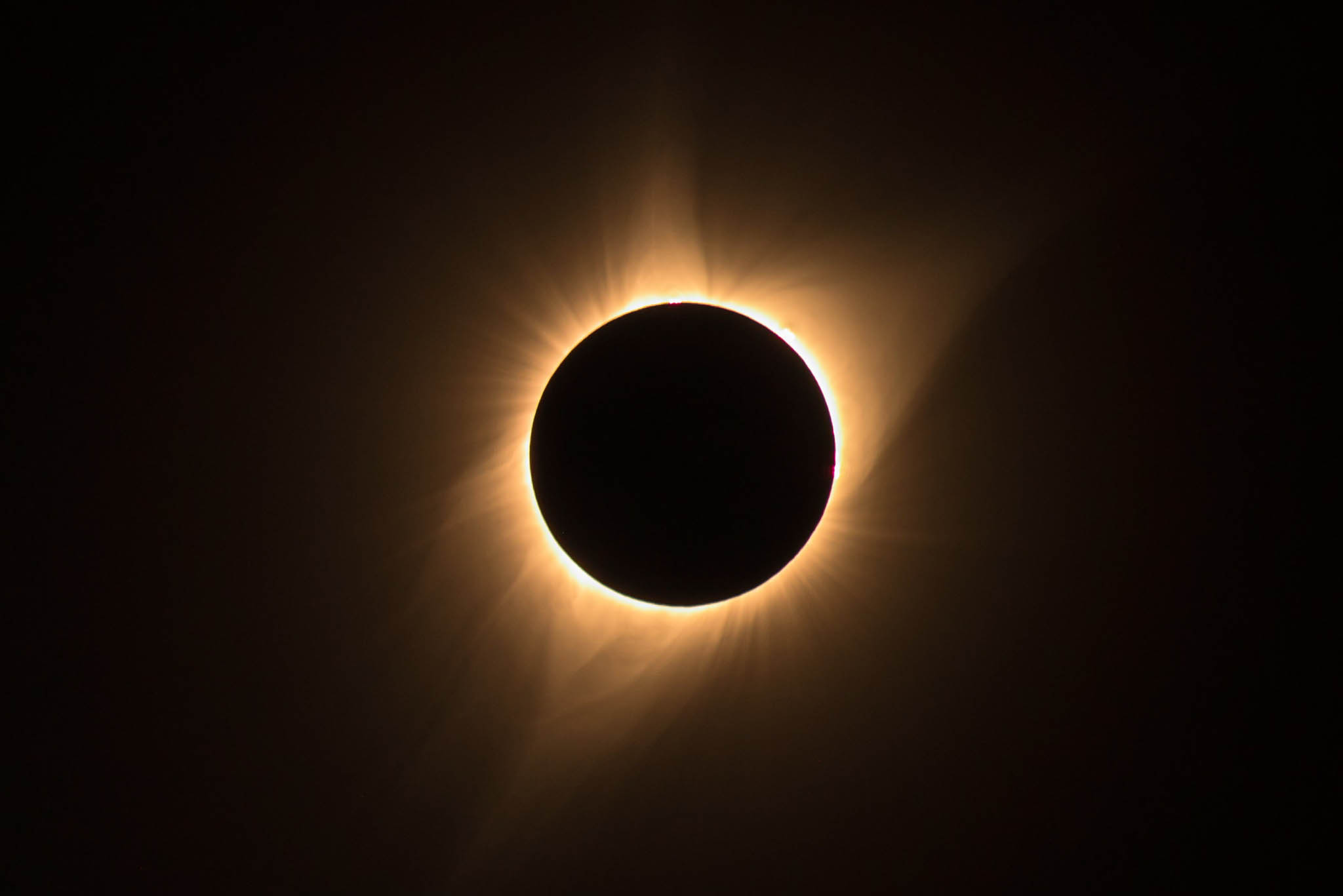In anticipation of the solar eclipse on April 8th, Canon and Keith Ladzinski (Canon Explorer of Light and National Geographic Photographer) and shared these suggestions.
Photo (above) and text courtesy of Canon and Keith Ladzinski.
-
- It is never safe to look at the sun without proper eye protection when any part of it is visible behind the moon.
- It is also not a good idea to look through your camera’s optical, eye-level viewfinder when photographing a solar eclipse, even with a solar filter on the lens, because there are a lot of different solar filters on the market.
- Some are safe only for photography while others are safe for both photography and viewing through your camera’s viewfinder eyepiece.
- Using a solar filter on the front of the lens, and viewing on your camera’s lcd monitor (and live view function) instead of the viewfinder is always the safe way to photograph an eclipse.
Solar filters can transmit or restrict different wavelengths of light. Non-silvered glass and metalized Mylar produce a blueish-white sun disk while professional silver/black polymer solar film produces a yellow sun disk.
A truly safe filter for viewing and photography should have a CE or ISO certification and goes over the front of the lens or in the rear filter tray when using super telephotos. (Be careful that the certifications are real.)
There is a difference between solar filters used by the public for viewing the solar eclipse and photographers photographing the solar eclipse.
ND filters that restrict 14 – 16.5 stops of light may be safe for photography use only but not for direct viewing. Restricting the light being passed through a filter is only part of the story. A safe filter for photography and viewing also restricts infrared and ultraviolet light beyond a wavelength of 800nm. Neutral density filters usually don’t do this. Not having a solar filter or having a plain ND filter can burn a hole not only through the sensor of a camera, but also melt the aperture blades.
The same advice goes for using a smartphone, iPhone, etc.
Choosing a Lens
Choosing a lens depends on how large of a sun or moon disk you want. A 400mm lens on an APS-C sensor camera gives you a sun disk that is ¼ of the image height.
Partial and Totality Phases
The partial phases occur as the moon begins to partially cover or uncover the sun’s disk. Throughout this phase, you have the full intensity of the sun visible and need an actual solar filter over the lens. As the moon progressively covers more of the sun, there will be a point where only a small piece of the bright sun remains visible, and surrounding the moon is a bright ring of light from the sun. This is sometimes called the “diamond ring effect.”
Only if you are in a location with totality:
If you want to successfully photograph this conclusion of the partial phase, leading up to eclipse totality, you may want to remove your solar filter and then photograph it. But be extremely careful, without a solar filter in place, the direct sunlight — even from just a small segment of the sun — can be damaging.
About five seconds before totality, there are still a few tiny rays of sunlight peeking between the valleys of the craters on the moon. This creates what has been named Baily’s beads, after English astronomer Francis Baily. Once the moon completely covers the sun, after Baily’s beads, totality has begun and you are photographing the corona. Totality during this eclipse will vary but will average, on the centerline, about 2½ minutes. At the end of totality, Baily’s beads begin to reappear, leading to the diamond ring effect. Once the light of the diamond ring effect becomes very bright, replace your solar filter onto the front of your lens. From this moment through all the concluding partial phases, the solar filter needs to remain on the front of your lens.
Exposure
Exposing the solar disk can be made in either automatic or manual exposure modes. Depending on the lens and meter mode you use, the possible large amount of black in the viewfinder may create a very overexposed sun disk with any of the automatic exposure modes. Manual exposure mode will usually yield better consistent results throughout the eclipse.
The intensity of the sun isn’t going to change even up to the diamond ring. The sliver of sun you see just before Baily’s beads is still very bright. The only reason the intensity would change is if clouds drift overhead or the sun sinks lower into the west.
Canon will be hosting workshops on the day of the eclipse.
You can also watch live Eclipse coverage with Keith Ladzinski from Indianapolis Speedway on The Weather Channel.









